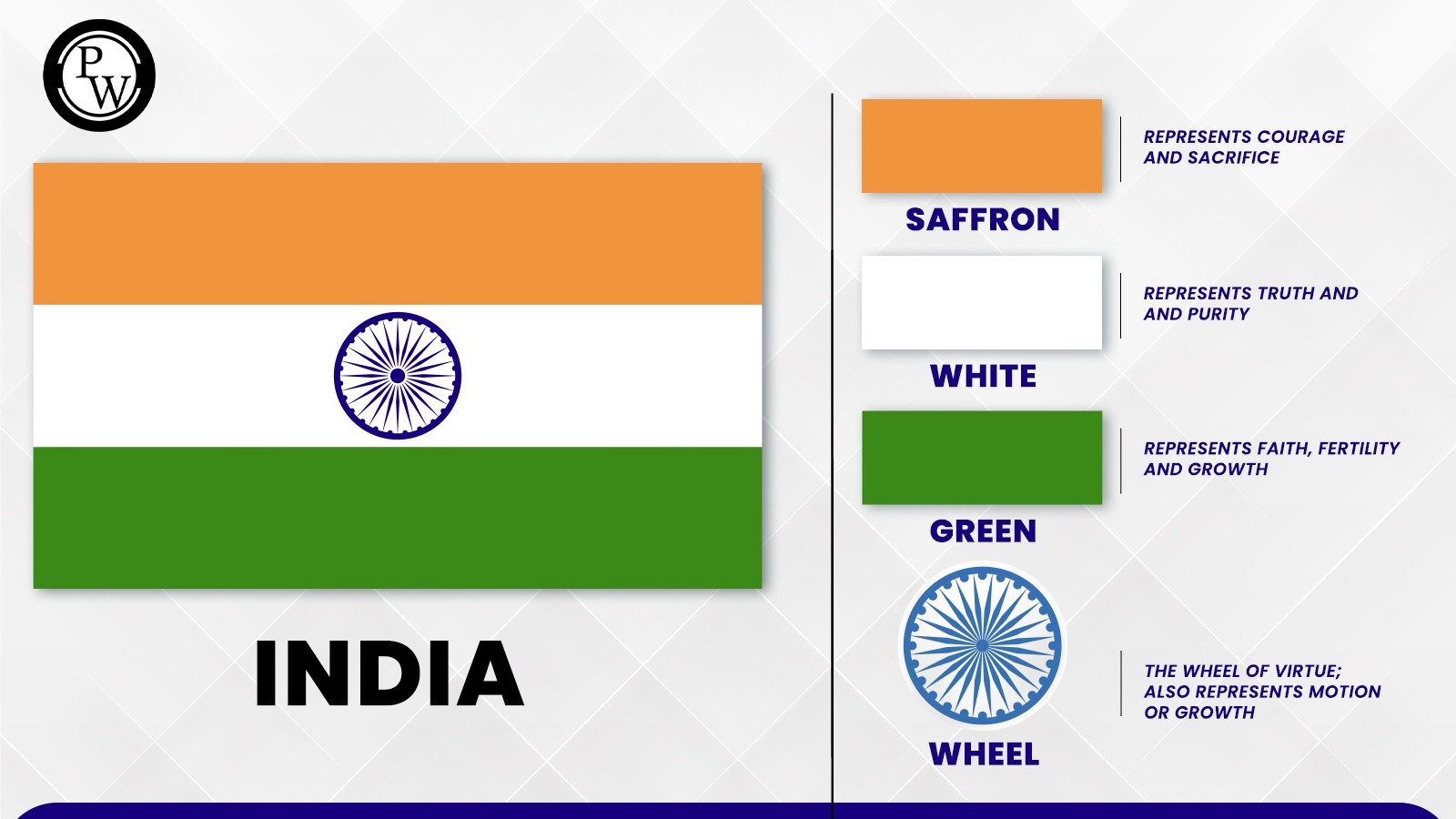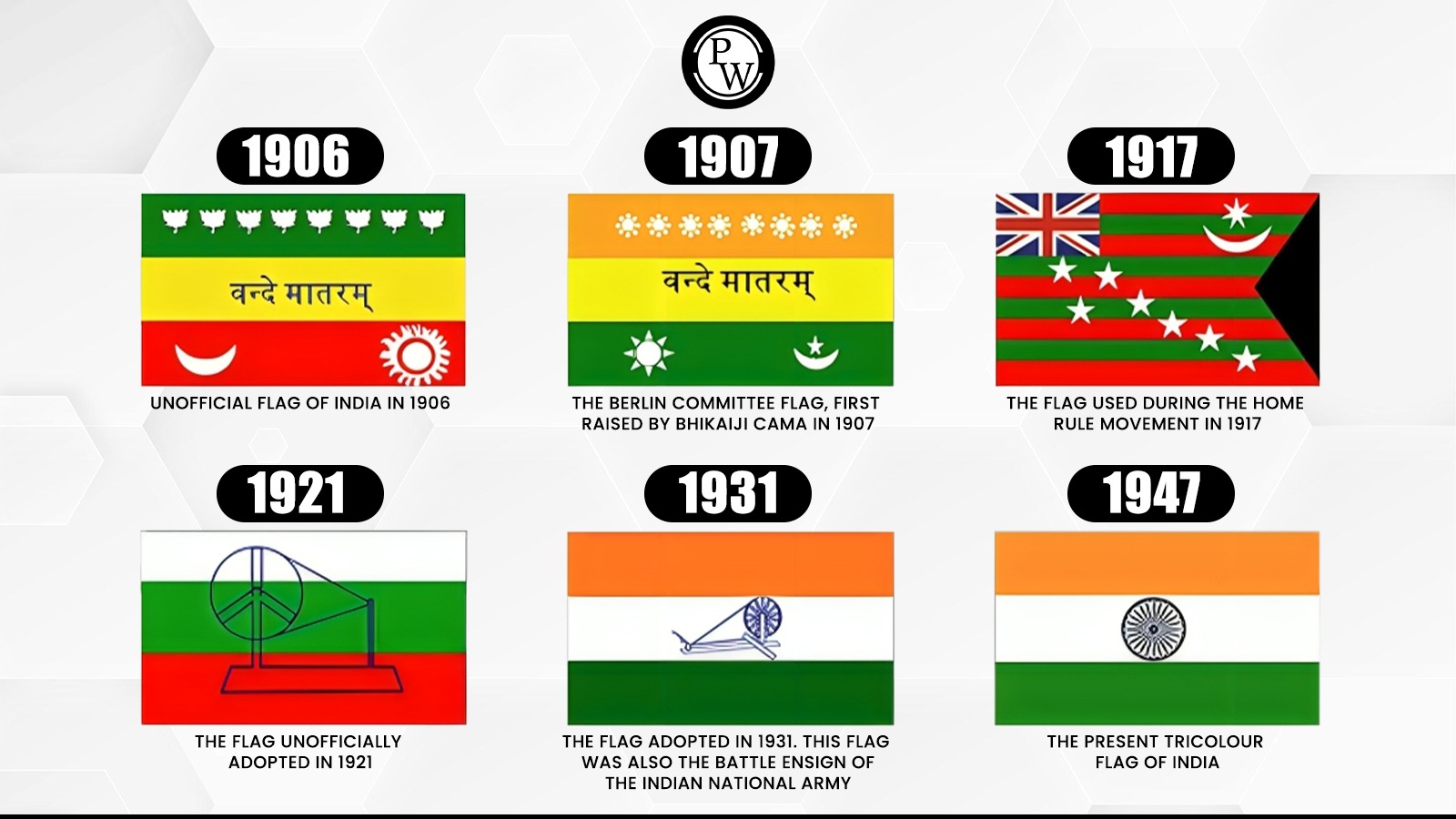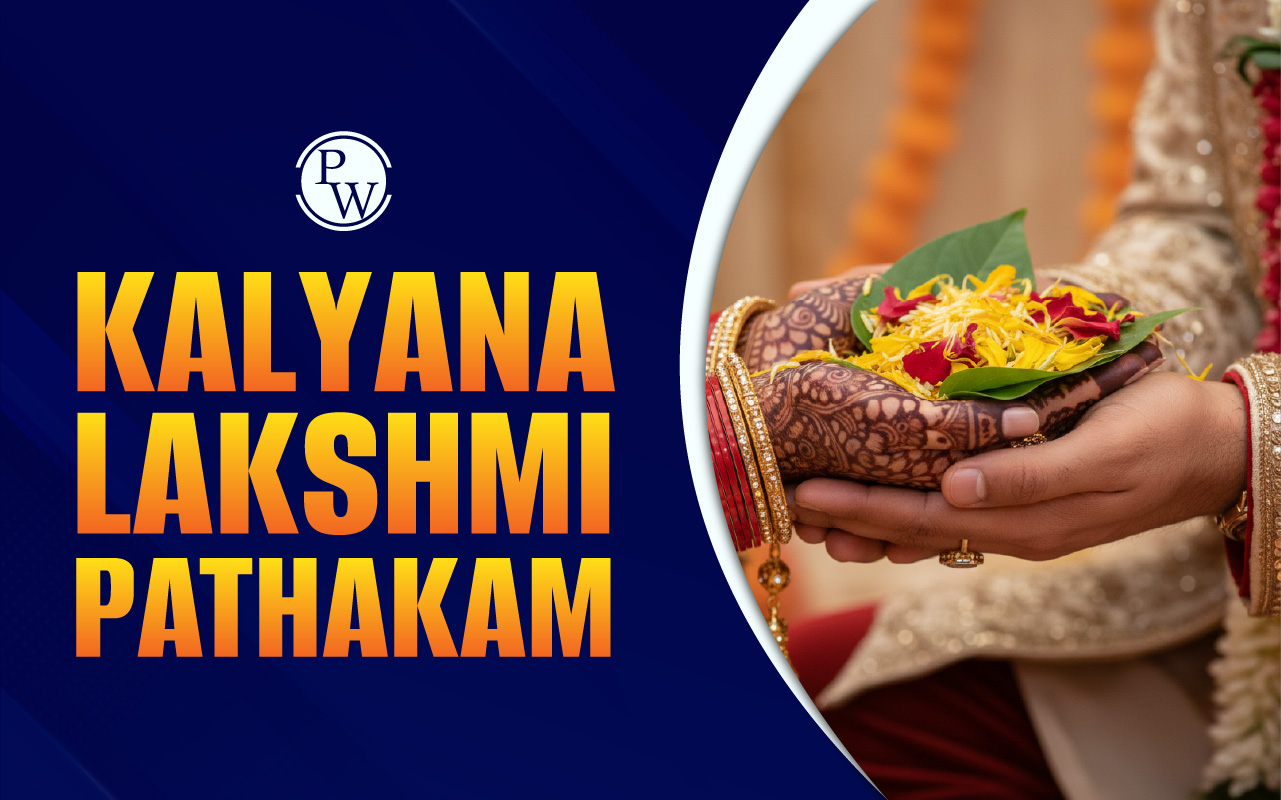
National Flag Day 2024 : National Flag Day in India is observed annually on July 22nd to commemorate the date in 1947 when the Constituent Assembly of India adopted the tricolour as the official flag of independent India. From that day onwards, the Indian Tricolour has served as the symbol of the nation's unity, courage, and aspirations.
On July 22, 2024, as the country celebrates National Flag Day 2024, let us rededicate ourselves to the values it represents and work towards building a stronger, more prosperous India. Read on to learn about the history, meaning, and proper methods for hoisting the Indian Flag.National Flag Day 2024
It was on July 22, 1947, around 23 days before India’s independence, that the Constituent Assembly adopted the ‘Tricolour’ as the Indian flag. Since then, the Indian national flag, affectionately known as the Tiranga, has been a source of immense pride for all Indians. As we approach National Flag Day 2024, it is important to reflect on the significance of this revered national symbol.| National Flag Day 2024 Facts | |
| Adopted on | July 22, 1947 |
| Also Known As | Tricolor or Tiranga |
| Inspired From | The Swaraj flag designed by Pingali Venkayya |
| Length to Width Ratio | 3:2 |
| Colours of the Flag | Saffron, White, and Green |
| Govern By | The Flag Code of 2002 |
| Constitutional Provision | Article 51-A Fundamental Duty to abide by the Constitution and respect its ideals and institutions, the National Flag, and the National Anthem. |
Evolution of Our National Flag
The evolution of the Indian National Flag traces its journey from the first hoisting on August 7, 1906, at Parsee Bagan Square, Kolkata, to its present form. The first flag had three horizontal stripes of red, yellow, and green, with "Vande Mataram" in the middle of the yellow stripe. It also had symbols of the sun and a crescent moon. Later on, the Indian Flag underwent many modifications, and the present design of Tiranga was adopted on July 22, 1947. Let’s recount the journey of the Tricolor on this National Flag Day 2024:| National Flag History | |
| Year | Flag Description |
| Till 1906 | Various flags representing different freedom movements |
| 1906 | The first unofficial flag with three horizontal stripes (green, yellow, red) was hoisted in Kolkata. |
| 1907 | Madame Cama hoisted the Berlin Committee Flag in Germany with saffron, yellow, and green strips. |
| 1917 | A new flag with five alternate red and four green horizontal stripes and Union Jac at the top left corner was adopted by Dr Annie Besant and Lokmanya Tilak as part of the Home Rule Movement. |
| 1921 | Mahatma Gandhi proposed a flag with a spinning wheel (charkha) on a red, white, and green background |
| 1931 | The tri colour (saffron, white, and green) with the charkha was adopted as the official flag of the India by Congress Committee in the Karachi Session |
| 1947 | The current Tricolor (saffron, white, and green) with Ashoka Chakra was adopted as the national flag by the Constituent Assembly on 22 July. |
Meaning of Indian Tricolor
The Indian national flag, with its distinct tricolour design, is a powerful symbol of the nation's unity and diversity. Each colour and symbol on the Indian flag holds deep meaning and reflects the nation's values.- Saffron (Kesari): The top band of the national flag is of saffron colour, representing the courage and strength of the country. It symbolizes the bravery and selflessness of Indians amidst adversities.
- White (Shwet): The white band in the middle signifies peace with Dharma Chakra. The white colour symbolises truth and purity and represents the nation's commitment to maintaining peace and harmony among its diverse cultures and communities.
- Green (Harit): The green band in the last symbolizes fertility, growth, and auspiciousness of the land. It signifies the country's agricultural and natural heritage and its commitment to growth and prosperity.
- Ashoka Chakra: In the white band, the Ashoka Chakra is situated at the centre in navy blue . Also known as the Dharma Chakra (wheel of the law), this symbol was adopted from the Sarnath Lion Capital. It symbolises constant movement and progress .

National Flag Day 2024-Dos and Don’ts
As the nation celebrates National Flag Day 2024, it is important to remember the proper etiquette for hoisting the national flag. We must all follow the guidelines of the Flag Code of India 2002 to show respect for the national flag and uphold its dignity. Here are some dos and don'ts:Do’s
- Hoist the Flag Correctly: Ensure the flag is hoisted at a suitable height and in a proper manner. The Indian Flag may be hoisted in educational institutions, and public or private organisations adhering to the flag code.
- Follow Rules While Displaying: Display the flag at homes, offices, and public buildings with dignity and honour. Treat the flag with care and ensure it is not damaged or defaced.
- Dispose of Respectfully: Dispose of worn-out or damaged flags respectfully. Engage in activities that promote national unity and patriotism on National Flag Day 2024.
- Educate Others: Spread awareness about the significance of the national flag and how to display/hoist it correctly.
Don’ts
- Avoid Disrespect: Never let the flag touch the ground or be used as drapery, costume, or clothing. Ensure that no other flag or bunting is placed higher than the national flag.
- No Improper Disposal: Do not discard a damaged flag casually. It should be disposed of respectfully.
- No Commercial Use: Refrain from using the flag in a manner that disrespects its dignity. The flag should not be used for commercial purposes or advertisements.
- Maintain Proper Condition: Do not display a damaged or soiled flag. Ensure it is always clean and consistent with the provisions of the Flag Code of India.
| Related Articles | |
| Van Mahotsav 2024 | International Day Of Cooperatives 2024 |
| NABARD Foundation Day 2024 | World Youth Skills Day 2024 |
| World Day for International Justice 2024 | Nelson Mandela Day 2024 |
National Flag Day 2024 FAQs
When is Indian National Flag Adoption Day observed?
Indian National Flag Adoption Day is observed on July 22, the day when the Constituent Assembly adopted the ‘Tricolour’ as the national flag.
What’s special about National Flag Day 2024?
National Flag Day 2024 marks the 78th anniversary of the adoption of the Indian Tricolour.
Who was the first woman to hoist the national flag?
Madame Cama was the first woman to hoist the Indian national flag in 1907.
Who will unfurl the national flag on Republic Day?
The President of India unfurls the national flag on Republic Day.
What is the meaning of each colour of the National Flag?
Saffron represents courage and strength, white symbolises peace and truth, green stands for fertility and growth, and the Ashoka Chakra signifies progress and movement.
Who was the first woman to hoist the national flag at the Republic Day parade?
President Pratibha Patil was the first woman to hoist the national flag at the Republic Day parade.
🔥 Trending Blogs
Talk to a counsellorHave doubts? Our support team will be happy to assist you!

Check out these Related Articles
Free Learning Resources
PW Books
Notes (Class 10-12)
PW Study Materials
Notes (Class 6-9)
Ncert Solutions
Govt Exams
Class 6th to 12th Online Courses
Govt Job Exams Courses
UPSC Coaching
Defence Exam Coaching
Gate Exam Coaching
Other Exams
Know about Physics Wallah
Physics Wallah is an Indian edtech platform that provides accessible & comprehensive learning experiences to students from Class 6th to postgraduate level. We also provide extensive NCERT solutions, sample paper, NEET, JEE Mains, BITSAT previous year papers & more such resources to students. Physics Wallah also caters to over 3.5 million registered students and over 78 lakh+ Youtube subscribers with 4.8 rating on its app.
We Stand Out because
We provide students with intensive courses with India’s qualified & experienced faculties & mentors. PW strives to make the learning experience comprehensive and accessible for students of all sections of society. We believe in empowering every single student who couldn't dream of a good career in engineering and medical field earlier.
Our Key Focus Areas
Physics Wallah's main focus is to make the learning experience as economical as possible for all students. With our affordable courses like Lakshya, Udaan and Arjuna and many others, we have been able to provide a platform for lakhs of aspirants. From providing Chemistry, Maths, Physics formula to giving e-books of eminent authors like RD Sharma, RS Aggarwal and Lakhmir Singh, PW focuses on every single student's need for preparation.
What Makes Us Different
Physics Wallah strives to develop a comprehensive pedagogical structure for students, where they get a state-of-the-art learning experience with study material and resources. Apart from catering students preparing for JEE Mains and NEET, PW also provides study material for each state board like Uttar Pradesh, Bihar, and others
Copyright © 2025 Physicswallah Limited All rights reserved.
Get App







